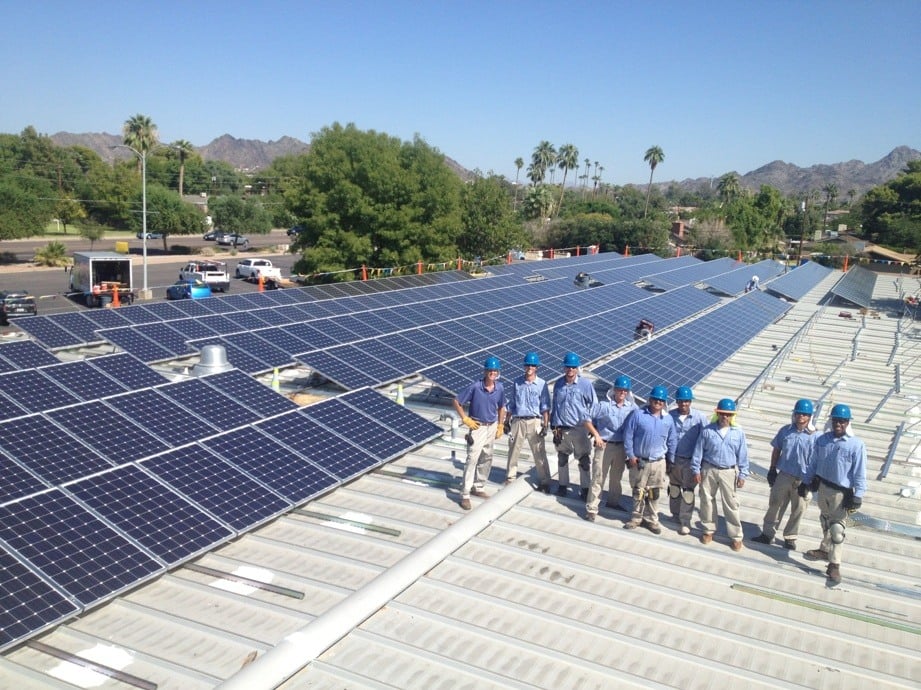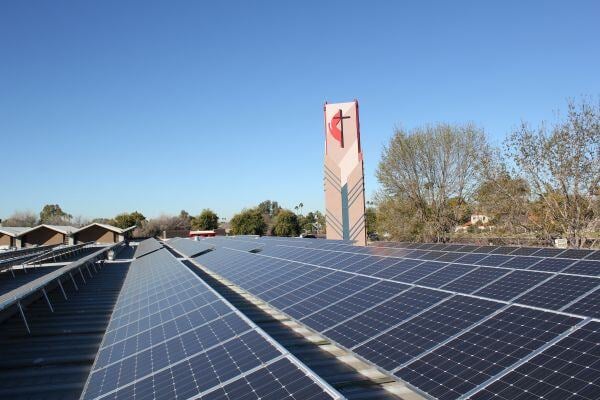Solar for Non-Profits
New Incentives. Even Greater Savings.
- Home
- Empower Your Non-Profit with Solar Energy Solutions
The Inflation Reduction Act Changed Everything
Whatever your mission, every penny certainly counts in achieving your goals. So, when the opportunity arises to reduce operating expenses dramatically, doesn’t your mission demand that you take a closer look?
Electricity is essential whether you operate a house of worship, charter school, health care facility, public school, or affordable housing project. This is where solar can help. By generating your electricity, your nonprofit can drastically reduce operating costs and free money for use elsewhere. Most importantly, with the recent passing of the Inflation Reduction Act, significant government incentives are available to make going solar more affordable than ever before, like receiving a direct payment of up to 40% of your system cost from the IRS - no tax liability needed! With this amazing incentive, the typical payback period has been cut in half and is now five years or less.
Your Cause, Powered by the Sun
As long as your organization exists, you’ll need electricity to run it. This essential cost is increasing by 3%-5% annually in most areas. More alarmingly, the cost of electricity is bound to skyrocket as global warming and electric vehicles place higher demands on our national electric grid.
If you opt to make your electricity, you’ll hedge against those rising energy costs while freeing funds that can be used to achieve your mission. Most modern solar panels have an estimated life span of 30 years or more, allowing you to lock in predictable energy costs for decades.
Go, Green, Get Noticed
As Arizona’s most abundant natural resource, sunshine is a clean and nearly limitless energy alternative that will keep your organization running so you can do good without harming the environment. People will notice, too. Almost anyone can get behind solar, which will mobilize donors and improve your reputation within the community.

Proven Track Record with Non-Profits
With over 17 years of experience in the commercial solar industry, we've helped numerous non-profits go solar and save money on their electricity bills. Thanks to the Inflation Reduction Act, non-profits can save even more by switching to solar energy. Please take a look at the non-profits we've already helped and how much they've been able to save.
CrossRoads Methodist Church Covers 90% of Electricity Needs with Solar
CrossRoads Methodist Church in Phoenix, Arizona, installed a 107kW solar energy system that covers 90% of their annual electricity needs. The environmental impact of avoiding the CO2 emissions equivalent to burning 143,489 pounds of coal is equally impressive.

Sacred Heart Church Saves $1.3 Million
Sacred Heart Church in Prescott, Arizona, installed a 160kW solar energy system split between solar carports and rooftop solar arrays. In its first 25 years of production, Sacred Heart is estimated to save more than $1.3 million in electricity. You can learn more about their solar project in the video below!
Primary vs. Third-Party Ownership
One of the biggest hurdles for non-profits considering a solar investment is financing. Funding generally comes down to two options: primary ownership and third-party ownership.
Primary Ownership
In this model, the non-profit pays the entire cost of the solar project, whether through out-of-pocket cash or loans. The non-profit owns the system and retains 100% of the financial benefits, including a direct payment from the IRS up to 40% of your system cost and 100% of the electricity savings. In addition, your organization will own a tangible asset that will increase the value of your property. The non-profit is responsible for maintenance and repairs not covered by a manufacturer or workmanship warranty.
Third-Party Ownership
Instead of owning the system, a third-party investor pays to install panels at your facility. Your organization then buys back the electricity generated by those panels for a fixed monthly payment. Because solar electricity is far less expensive than grid power, that monthly payment is less than what you would otherwise pay the electric utility. Plus, you can rest easy knowing you’re using clean solar energy rather than dirty grid power. Contracts typically range from 20-30 years.
Unlike an owned system, a system installed through a lease or PPA is the property of the third-party owner. As such, they will be responsible for system maintenance and repairs. In exchange, the owner/investor can keep the lucrative tax breaks and other incentives while collecting a recurring monthly payment from your organization.

Inflation Reduction Act Turbo-Charges Solar for Non-Profits
For years, non-profits were mostly excluded from the lucrative 30% federal solar tax credit. Without a tax liability, the tax credit offered virtually no help. This all changed with the passage of the Inflation Reduction Act, which allows non-profits to receive a direct payment from the IRS equivalent to 30% of the total project cost when going solar. An additional 10% is available if the property is in a low-income neighborhood. This is a guaranteed payment, not not tied to tax liability.
The incentive will change over time and through domestic manufacturing requirements. Until 2024, systems installed by qualifying tax-exempt entities will be eligible to receive the full 30% credit based on the cost of the system. After 2024, systems larger than 1 MW will need to meet specific domestic manufacturing requirements to receive the full 30% credit. These manufacturing requirements have not been defined at this time.
Systems under 1 MW in size will receive the full 30% credit regardless of domestic equipment. There are also opportunities for bonus add-on savings. Non-profits can also qualify for an extra 10% savings if installed in a specific energy community or low-income area.
Filing for the direct payment must be completed at the end of the next tax deadline, which for 501(c) non-profits is in May of the following year. It could take up to one year or more to receive the direct payment.
If you do not qualify for the direct payment option for this credit, you may be able to sell or transfer your tax credit. This allows you to recoup a portion of the credit still.
Why Sun Valley Solar for Your Nonprofit
As a member of the Alliance of Arizona Nonprofits, we advocate and support nonprofits across the state. With over 17 years in the commercial solar industry, we have the knowledge and skills to design and install a customized solar energy system to help you save money and achieve your goals. Our involvement doesn’t stop after installation, however. Our fully in-house commercial O&M team will be around for the length of your solar investment to ensure it’s operating at peak efficiency.
